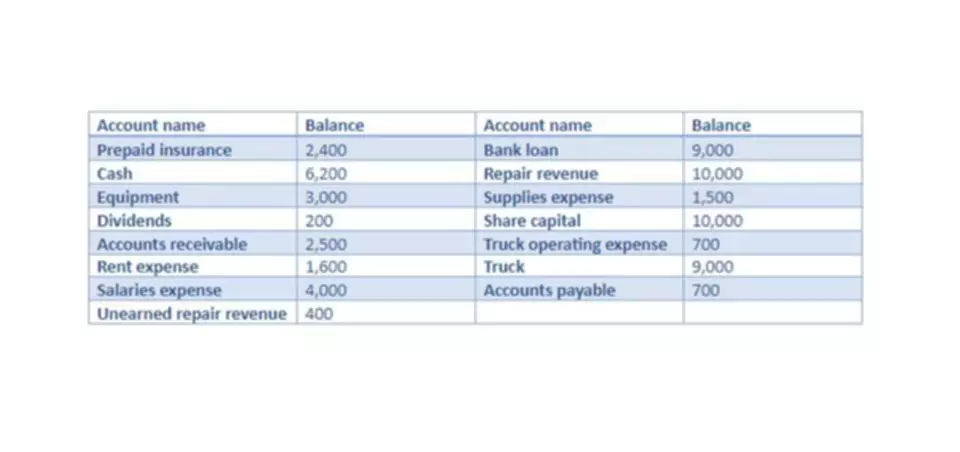Content

It’s key to determine what your market multiple is, and having access to successfully completed transactions is vital in this research. You’ll likely need to see a business broker who has the certified business intermediary (CBI) designation, or a mergers and acquisition specialist. Both of these professionals can look up the average market multiple for your industry and adjust it up or down based on the individual characteristics of your company and circumstance. A lot of training and professional standards go into determining this, so when the time is right to list and sell your business, don’t rely on 2.28 just because it’s the market average. This approach looks at the estimated future cash flows of the business and discounts them back to the present to find the current worth. If you’re simply looking to get a basic idea of what your business is worth, there are a few steps you can take to get a rough estimate.
- If buying and selling businesses is a new frontier for you, you can consult any number of online resources to help you determine the value of a business.
- Under the income approach, create a forecast of the expected cash flows of a business for at least the next five years, and then derive the present value of those cash flows.
- A “growing perpetuity” is any financial instrument that pays a certain amount each year to investors or owners.
- The non-controlling shareholder, however, lacks this authority and cannot access the value of the assets.
- Valuation discounts are multiplicative, so they must be considered in order.
- The value of a growing perpetuity is calculated by dividing cash flow by the cost of capital minus the growth rate.
- While Tesla’s market capitalization is higher than both Ford and GM, Tesla is also financed more from equity.
Fair value also does not incorporate discounts for lack of control or marketability. Because you’re familiar with your own equipment and production, you can make pretty accurate estimates of each of your asset’s value and depreciation. Even if you don’t adjust the asset’s worth according to the current market, you can still get a good sense of a business’s material value.
Market Capitalization
A business valuation is the process of determining a business’s economic value. Analysts will use factors like company leadership, the current market value of a company’s assets, and future earnings to determine valuation. Imagine the EBITDA of a company as a growing perpetuity paid out every year to the organization’s capital holders. The debt cost is essentially the company’s after tax interest rate; the cost of equity, as discussed below, is typically calculated via the CAPM, but often employing an alternative method. The standard of value is the hypothetical conditions under which the business will be valued.
- Valuing a business based on sales and revenue uses your totals before subtracting operating expenses and multiplying that number by an industry multiple.
- Arguably, the best thing to do is utilize all of the above, or at least most of the above methods, then average out costs to have a big-picture understanding of a business’s value.
- If you just want to value your business for your own information, keep this information in your records in case you need it for a loan or investment in the future.
- A measure of common sense and a good grasp of mathematics is helpful.
Imagine a stipend for retirement that needs to grow every year to match inflation. The growing perpetuity equation enables you to find out today’s value for that sort of financial instrument. The various approaches to valuation are detailed in the following sections. Our valuation services adhere to the professional standards of the American Institute of Certified Public Accountants (AICPA) and the National Association of Certified Valuators and Analysts (NACVA). The truth is that there’s no substitute for the experience of a professional appraiser. Software can help you crunch numbers and evaluate the bottom line, but it’s not going to understand the nuances of your business.
Company Valuation Example
To find an ABV who can help, look for someone registered with the American Society of Appraisers (ASA). It explains why a smaller company like Tesla carries a high enterprise value. The market has taken notice that, while Tesla is much smaller today than Ford or GM in total enterprise value and revenues, that may not always be the case.

Your industry multiple is an average of what businesses typically sell for in your industry so, if your multiple is two, companies usually sell for 2x their annual sales and revenue. Before you perform any valuation of a business, it’s important to know how to evaluate the different assets and liabilities you’ll encounter. Tangible assets are items you posses and can sell or dispose of reasonably fast, such as equipment, inventory, cash, investments and https://www.bookstime.com/ receivables. It’s a good idea to know your business’s worth, and there are a few different ways to come up with valuations. Whichever method you use, update your calculation annually, and speak to a professional business appraiser for the most accurate valuation possible. Once you know how much your company is worth, you can then determine if it’s time to sell your business and cash out now, or continue building for an increased future valuation.
Enterprise Value
The risk premium is derived by multiplying the equity risk premium with beta, a measure of stock price volatility. Beta is compiled by various researchers for particular industries and companies, and measures systematic risks of investment. As you can deduce from its name, the market approach to valuing a business determines a company’s value based on the purchases and sales of comparable companies within the same industry.

You might think that you can’t actually distill the value of your entire business to an exact number — and, sure, in a way it’s a bit of an estimate. But as a seller, you have to put some number on your operation, especially if you want to be compensated for what you’ve built, taking into account all kinds of equity. Even though a small chunk of the population continues to use typewriters, there’s not much growth potential in the industry. At least, not nearly as much as there is for a tech firm designing the next generation of VR. You bought five pounds of pink glitter, for a new experimental bath bomb (“Grapefruit Sunrise”).
The Difference Between Book Valuation and Fair Market Valuation
Companies that are going public are required to disclose all transactions in their stocks for a period of three years prior to the IPO. The pre-IPO studies are the leading alternative to the restricted stock stocks in quantifying the marketability discount. However, income valuation methods can also be used to establish the value of a severable business asset as long as an income stream can be attributed to it. An example is licensable intellectual property whose value needs to be established to arrive at a supportable royalty structure. The reason is that your company’s balance sheet shows your assets at their original cost, minus accumulated depreciation, instead of using the true replacement value.
One of the criticisms of the CAPM is that beta is derived from volatility of prices of publicly traded companies, which differ from non-publicly companies in liquidity, marketability, capital structures and control. Other aspects such as access to credit markets, size, and management depth are generally different, too. Where a privately held company can be shown how to calculate a business valuation to be sufficiently similar to a public company, the CAPM may be suitable. However, it requires the knowledge of market stock prices for calculation. For private companies that do not sell stock on the public capital markets, this information is not readily available. The build-up cost of capital model, discussed below, is the typical choice in such cases.
Business valuation
On the sell side, a deep understanding of your industry’s trends can help you reach an informed valuation that reflects your business assets as well as the current market. Because the process for determining the value of a small business is complicated, you might want to consider consulting a professional business broker or accountant that specializes in valuation, rather than going it alone. However, you’re fully capable of valuing your business using your own resources. Conducting a valuation is an excellent opportunity to assess the financial health and potential of your business, or of a business you’re hoping to buy. Along with doing financial legwork, valuing your business also requires you to exercise control over any emotions.
Such as in the case of a sale, this valuation method can also be used when a business is considering a merger or acquisition. This calculation is used when a business is considering a sale, but the owner wants to ensure they get the best possible price for each asset. To avoid using this valuation method, keep your business running smoothly and try to avoid any financial difficulties. This is the amount that would be received if the company was forced to sell all its assets immediately. This formula is often used by investors to determine whether a company is overvalued or undervalued.
Profitability
Once you subtract all your liabilities from all your business assets, you get your book value. If you have had extensive experience with various valuation methods, that can be a great thing to discuss in your cover letter where you have the extra space to show off your knowledge. A “growing perpetuity” is any financial instrument that pays a certain amount each year to investors or owners.

